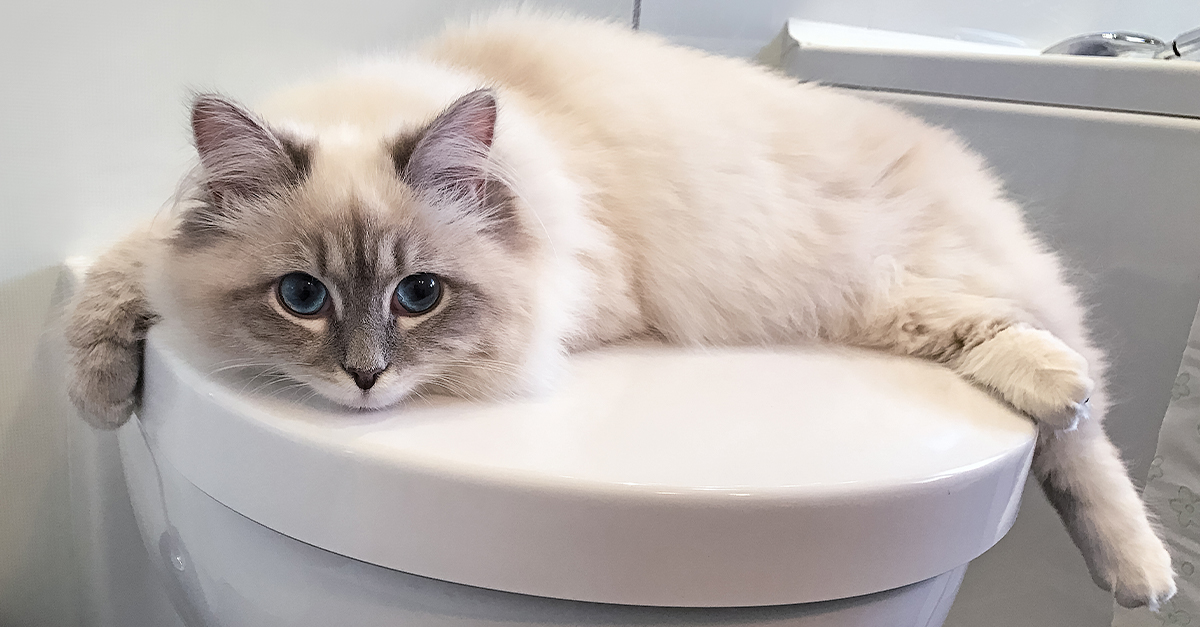The Risks of Flushing Cat Poop in Your Toilet - Precautionary Measures
The Risks of Flushing Cat Poop in Your Toilet - Precautionary Measures
Blog Article
Almost everyone has his or her own assumption involving Don’t flush cat feces down the toilet.

Intro
As pet cat owners, it's necessary to bear in mind how we take care of our feline close friends' waste. While it might appear convenient to purge cat poop down the bathroom, this technique can have detrimental repercussions for both the setting and human health and wellness.
Environmental Impact
Flushing cat poop presents dangerous pathogens and bloodsuckers right into the water, posturing a considerable danger to aquatic communities. These pollutants can negatively affect aquatic life and concession water high quality.
Health and wellness Risks
In addition to environmental worries, purging feline waste can likewise position wellness threats to people. Pet cat feces might have Toxoplasma gondii, a bloodsucker that can create toxoplasmosis-- a potentially extreme illness, especially for expecting females and individuals with damaged body immune systems.
Alternatives to Flushing
Fortunately, there are much safer and extra responsible methods to dispose of feline poop. Consider the following options:
1. Scoop and Dispose in Trash
The most usual method of taking care of cat poop is to scoop it into a naturally degradable bag and throw it in the trash. Make sure to make use of a committed litter scoop and throw away the waste immediately.
2. Use Biodegradable Litter
Go with biodegradable pet cat litter made from materials such as corn or wheat. These trashes are environmentally friendly and can be securely gotten rid of in the garbage.
3. Hide in the Yard
If you have a lawn, think about hiding feline waste in a marked area far from veggie yards and water resources. Make sure to dig deep sufficient to prevent contamination of groundwater.
4. Mount a Pet Waste Disposal System
Buy a pet garbage disposal system specifically designed for cat waste. These systems make use of enzymes to break down the waste, lowering odor and environmental impact.
Verdict
Responsible family pet possession prolongs beyond giving food and shelter-- it also entails correct waste administration. By avoiding flushing pet cat poop down the commode and selecting different disposal techniques, we can minimize our ecological footprint and secure human wellness.
Why Can’t I Flush Cat Poop?
It Spreads a Parasite
Cats are frequently infected with a parasite called toxoplasma gondii. The parasite causes an infection called toxoplasmosis. It is usually harmless to cats. The parasite only uses cat poop as a host for its eggs. Otherwise, the cat’s immune system usually keeps the infection at low enough levels to maintain its own health. But it does not stop the develop of eggs. These eggs are tiny and surprisingly tough. They may survive for a year before they begin to grow. But that’s the problem.
Our wastewater system is not designed to deal with toxoplasmosis eggs. Instead, most eggs will flush from your toilet into sewers and wastewater management plants. After the sewage is treated for many other harmful things in it, it is typically released into local rivers, lakes, or oceans. Here, the toxoplasmosis eggs can find new hosts, including starfish, crabs, otters, and many other wildlife. For many, this is a significant risk to their health. Toxoplasmosis can also end up infecting water sources that are important for agriculture, which means our deer, pigs, and sheep can get infected too.
Is There Risk to Humans?
There can be a risk to human life from flushing cat poop down the toilet. If you do so, the parasites from your cat’s poop can end up in shellfish, game animals, or livestock. If this meat is then served raw or undercooked, the people who eat it can get sick.
In fact, according to the CDC, 40 million people in the United States are infected with toxoplasma gondii. They get it from exposure to infected seafood, or from some kind of cat poop contamination, like drinking from a stream that is contaminated or touching anything that has come into contact with cat poop. That includes just cleaning a cat litter box.
Most people who get infected with these parasites will not develop any symptoms. However, for pregnant women or for those with compromised immune systems, the parasite can cause severe health problems.
How to Handle Cat Poop
The best way to handle cat poop is actually to clean the box more often. The eggs that the parasite sheds will not become active until one to five days after the cat poops. That means that if you clean daily, you’re much less likely to come into direct contact with infectious eggs.
That said, always dispose of cat poop in the garbage and not down the toilet. Wash your hands before and after you clean the litter box, and bring the bag of poop right outside to your garbage bins.
https://trenchlesssolutionsusa.com/why-cant-i-flush-cat-poop/

I ran across that content on Don’t flush cat feces down the toilet while doing a search on the internet. Liked our review? Please share it. Help other people check it out. Thanks for your time invested reading it.
Call Today Report this page